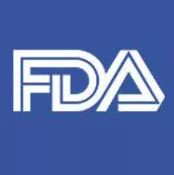U.S. FDA’s Nutrition Facts Chart Celebrates its 20th Anniversary
This year, we celebrate the 20th anniversary of the codification of the final rules that overhauled the U.S. Food and Drug Administration’s (FDA) nutrition labeling requirements for food in the United States. Passage of the Nutrition Labeling and Education Act (NLEA) gave FDA authority to require specific nutritional information be declared on most food sold in the United States. FDA’s ubiquitous Nutrition Facts Chart was born and all manifestations of it written into the Code of Federal Regulations (CFR). NLEA also led to the codification of the FDA requirements for making nutrient content and health claims on food. These FDA’s rules forever changed the way food would be labeled and marketed in the United States.
FDA labeling rules are complex. An entire part of the CFR (Part 101) is dedicated to the required labeling elements, including the statement of identity, net quantity statement, ingredient declarations, format of the nutrition chart and the information found therein, manufacturer/distributor/packer declaration and requirements for claims. The nutrition facts chart itself is regulated in a tangled web of requirements that stipulate when simplified, tabular, linear, side-by-side formats can be used. Additional regulations govern when footnotes may be excluded, when certain nutrient values may be omitted, where the chart may be placed, and when the chart may be omitted altogether.
Additional requirements may be found in Compliance Policy Guides and Guidance Documents. Some claims used on food labeling lack legal definitions, or are subject to “proposed rules” that have been languishing in regulatory limbo for years (e.g., “gluten-free,” “non-GMO,” refrigeration statements). Navigating this regulatory landscape can present a challenge for food companies.
Food products whose labels do not comply with FDA regulations may be deemed misbranded and risk detention and outright refusal by the agency. FDA recently stated that labeling problems accounted for 68 percent of food recalls, including 34 percent of recalls due to undeclared major food allergens. FDA Detentions are expensive and disrupt a company’s supply chain, often resulting in a loss of customers and financial revenue. Class action lawsuits against food companies for misleading nutrition claims are also on the rise. Even large companies such as Heinz, PepsiCo and ConAgra have not been immune.
By Registrar Corp
Looking for quick answers on food safety topics?
Try Ask FSM, our new smart AI search tool.
Ask FSM →








